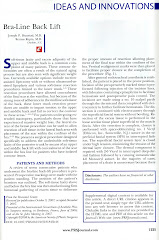Younger, tighter, arms.
A common complaint of many women with regards to the aging process is the shape and appearance of their upper arms. Despite diet, exercise, and moderation of sun exposure, the upper arms—the area between the elbow and the arm pit—can lose its elasticity and shape. Many women report that the youthful contour of their arms is difficult to maintain through diet and exercise. Patient report a looseness and laxity of the arms that can be seen and felt spanning from the arm pit to the elbow. The severity of the problem varies from one individual to another and can be best understood as four different categories:
Category 1: In the first category, the unwanted shape of the upper arm is primarily a result of excess fat. The quality and tone of the skin is relatively good. These individuals respond well to volume loss either by additional diet and exercise or through liposuction or non-invasive fat reduction technologies. More information on this last part with the next blog entry on non-invasive fat and soft tissue treatment technology.
Category 2: Skin and soft tissue laxity is present, but it is primarily located in the upper part of the upper arm near the axilla (arm pit). These patients are best suited either by an axillary tuck, also known as a short incision arm lift, or by a series of non-invasive treatments designed to tighten the deeper tissue of the arm. An example of this type of non-invasive therapy is Ulthera. Which modality would be best is determined by the extent of the laxity as well as the goal of the patient.
Category 3: Skin and soft tissue laxity is present throughout the entire length of the upper arm. These individuals are often best treated by a full arm lift requiring an incision the length of the upper arm. If laxity is only moderate or if some degree of residual deformity can be tolerated a short incision arm lift with the future addition of a non-invasive soft tissue tightening technology may also be reasonable. In my experience, however, category 3 patients are often best treated by a full incision long enough to accomplish a more definitive result as opposed to utilizing a smaller incision and leaving residual upper arm laxity.
Category 4: Skin laxity is present primarily just above the elbows. These patients have traditionally been the most difficult to treat as the options have been limited. An incision at or just above the elbow is visible and is prone to healing poorly due to the mechanical action of the elbow joint. Recently treatment with non-invasive soft tissue tightening technologies has provided a very good option for those with mild to moderate elbow skin laxity with the only downside being that the procedure would have to be repeated yearly.
All the best,
Phoenix/Scottsdale Plastic Surgery







